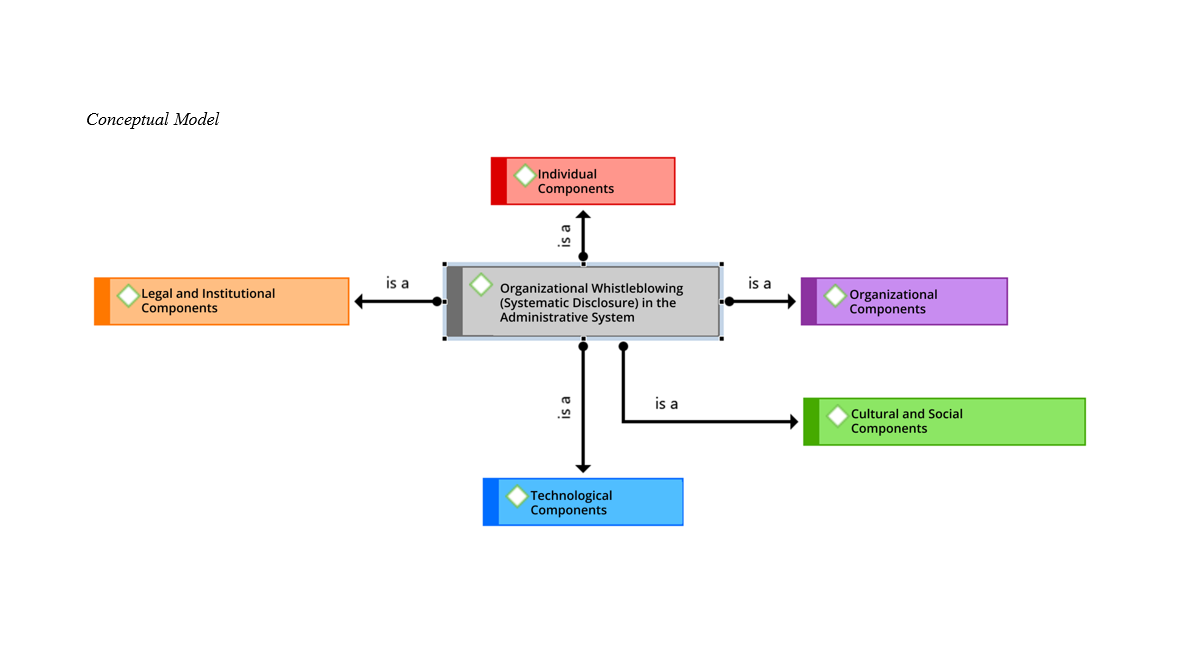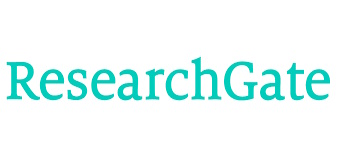Application of the Sterling-Darling Technique in Designing an Organizational Whistleblowing Model (Systematic Disclosure) in the Administrative System
Keywords:
Organizational Whistleblowing, Systematic Disclosure, Administrative SystemAbstract
The present study was conducted with the aim of designing a model of organizational whistleblowing (systematic disclosure) within the administrative system. Participants in this research included university professors and management experts in the municipality who had at least ten years of teaching experience and held a master’s degree or higher. The participants were selected using purposive sampling, based on the criterion of having teaching experience at the elementary education level. A total of 22 experts and specialists took part in the sampling process. The data collection tool in the field section was a semi-structured interview, which continued with participants until theoretical saturation was achieved. For the analysis of qualitative data, thematic analysis was employed based on the Attride-Stirling framework. To assess reliability, Holsti’s coefficient, Scott’s Pi coefficient, Cohen's Kappa index, and Krippendorff’s Alpha were utilized, all of which were confirmed. The software ATLAS.ti was used for the thematic analysis section. The results of the factor analysis show that among the 108 existing indicators (items), 32 basic themes were identifiable, which were organized into five organizing themes. Based on the findings, the basic, organizing, and ultimately global themes were identified. The identified organizing themes included individual components (psychological, cognitive, personality, behavioral, emotional, motivational, ethical, and experiential dimensions), organizational components (cultural, structural, managerial, human resources, and executive dimensions), legal and institutional components (legal, institutional, supportive, transparency and accountability, and preventive dimensions), cultural and social components (social, educational and promotional, communicative, psychosocial, normative and social valuation, and external impact dimensions), and technological components (information technology infrastructure, data analysis systems, cybersecurity, advanced reporting tools, traceability and tracking of reports, blockchain technologies, process automation, and system management and support).
References
Afulani, P. A., Gyamerah, A. O., Nutor, J. J., Laar, A., Aborigo, R. A., Malechi, H., Sterling, M., & Awoonor-Williams, J. K. (2021). Inadequate preparedness for response to COVID-19 is associated with stress and burnout among healthcare workers in Ghana. PLoS One, 16(4), e0250294. https://doi.org/10.1371/journal.pone.0250294
Ahmady, S., Shahbazi, S., & Heidari, M. (2020). Transition to Virtual Learning During the Coronavirus Disease–2019 Crisis in Iran: Opportunity or Challenge? Disaster Medicine and Public Health Preparedness, 14(3), e11-e12. https://doi.org/10.1017/dmp.2020.142
Amjadi, S., & Rahmani, Z. (2014). Hospital Disaster Planning Guide. International Journal of Current Life Sciences, 4(5).
Argyriadis, A., Ioannidou, L., Dimitrakopoulos, I., Gourni, M., Ntimeri, G., Vlachou, C., & Argyriadi, A. (2023). Experimental Mindfulness Intervention in an Emergency Department for Stress Management and Development of Positive Working Environment. Healthcare, 11(6), 879. https://doi.org/10.3390/healthcare11060879
Boin, A., & McConnell, A. (2007). Preparing for Critical Infrastructure Breakdowns: The Limits of Crisis Management and the Need for Resilience. Journal of Contingencies and Crisis Management, 15, 50-59. https://doi.org/10.1111/j.1468-5973.2007.00504.x
Cuthbertson, J. (2023). Ethical Decision Making in Disaster and Emergency Management: A Systematic Review of the Literature. Prehospital and Disaster Medicine. https://doi.org/10.1017/s1049023x23006325
Essien, A. E., & Petrounias, I. (2022). An Artificial Intelligence (AI)-Based Decision-Making Framework for Crisis Management. In M. Ali (Ed.), Future Role of Sustainable Innovative Technologies in Crisis Management (pp. 84-98). IGI Global. https://doi.org/10.4018/978-1-7998-9815-3.ch007
Fazeli Veisari, E., Norashrafodin, S. M., & Fazeli Veisari, M. (2021). Investigating the Mediating Role of Strategic Preparedness for Crisis Management in Islamic Azad Universities of Mazandaran Province: The Relationship between Organizational Agility and Employee Mental Health with Productivity. Modern Research in Performance Evaluation.
Fühner, J., Schmidt, S. L., & Schreyer, D. (2021). Are diversified football clubs better prepared for a crisis? First empirical evidence from the stock market. European Sport Management Quarterly, 21(3), 350-373. https://doi.org/10.1080/16184742.2020.1862273
Ghandi, M., & Roozbahani, A. (2019). Tehran's Drinking Water Supply Management in Pre Crisis Situations Using the Fuzzy PROMETHEE II Method. Journal of Water and Wastewater; Ab va Fazilab ( in persian ), 30(4), 1-15. https://doi.org/10.22093/wwj.2018.133679.2692
Hossein-Sadrabadi, I. (2023). Legal System for the "Health Emergency" Status: Management of the COVID-19 Epidemic in France. Quarterly Journal of Legal Research(2).
Jannat, F., Khorasani‐Zavareh, D., Allahbakhshi, K., Aghazadeh-Attari, J., Nateghinia, S., & Mohebbi, I. (2022). The Policy Gap and Inefficiency in Public Volunteers’ Response to Assist the Hospitals After Natural Disasters in Iran: A Grounded Theory Methodology. Disaster Medicine and Public Health Preparedness, 17. https://doi.org/10.1017/dmp.2022.53
Maksimović, G. (2024). Application of analytical hierarchy process for emergency managers selection. Journal of Decision Analytics and Intelligent Computing, 4(1), 253-262. https://doi.org/10.31181/jdaic10022122024m
Mohtady Ali, H., Ranse, J., Roiko, A., & Desha, C. (2023). Enabling transformational leadership to foster disaster‐resilient hospitals. International journal of environmental research and public health, 20(3). https://doi.org/10.3390/ijerph20032022
Nguyen, V. K., Pyke, J., Gamage, A., De Lacy, T., & Lindsay-Smith, G. (2022). Factors influencing business recovery from compound disasters: Evidence from Australian micro and small tourism businesses. Journal of Hospitality Tourism Management, 53, 1-9. https://doi.org/10.1016/j.jhtm.2022.08.006
Ortíz‐Barrios, M., Gül, M., López‐Meza, P., Yücesan, M., & Navarro-Jiménez, E. (2020). Evaluation of Hospital Disaster Preparedness by a Multi-Criteria Decision Making Approach: The Case of Turkish Hospitals. International Journal of Disaster Risk Reduction, 49, 101748. https://doi.org/10.1016/j.ijdrr.2020.101748
Pudineh, M., Miri, G. R., & Anvari, M. R. (2022). Analysis of the position of crisis management organizations in increasing urban resilience (Case study: Zabol city). Emergency Management, 11(1), 129-140. https://www.joem.ir/article_251426_a354a4ff88622571c423fd906ca88af1.pdf
Rad, E. B., & Kojouri, K. K. (2021). Strategic Preparation for Crisis Management in Relation With Organizational Learning and the Mediating Role of Social Innovation and Altruism in the Red Crescent Society, Gilan, Iran. Journal of Rescue and Relief. https://doi.org/10.32592/jorar.2021.13.2.1
Siddiqi, S. M., Kareddy, V., Uscher‐Pines, L., & Chari, R. (2023). Building Public Health Emergency Preparedness, Response, and Recovery Capabilities Through Disaster Citizen Science: Perspectives From Local Health Department, Academic, and Community Representatives. Journal of Public Health Management and Practice, 29(4), 473-486. https://doi.org/10.1097/phh.0000000000001686
Un, A., Leoni, G., & Stacchezzini, R. (2023). The effect of organizational characteristics on the perceptual performance of emergency management organizations. Journal of Emergency Management, 24(3), 325-337.
Velner, T., Rubinstein, Z., & Adini, B. (2023). Organizational Resilience Among Health Organizations in Israel. Prehospital and Disaster Medicine, 38(S1), s143-s143. https://doi.org/10.1017/s1049023x23003758
Yaghoubi, T., Ardalan, A., Khorasani, D., Khankeh, H., Nejati, A., & Ebadi, A. (2017). Decision-Making on Hospital Evacuation in Disaster and Emergencies. Iran Red Crescent Med. https://doi.org/10.5812/ircmj.14214

Downloads
Published
Submitted
Revised
Accepted
Issue
Section
License
Copyright (c) 2025 Mohammad Mehdi Sadat Hosseini, Mohammad Reza Rabiee Mandejin, Vahid Araei, Saeed Askari Masouleh (Author)

This work is licensed under a Creative Commons Attribution-NonCommercial 4.0 International License.









